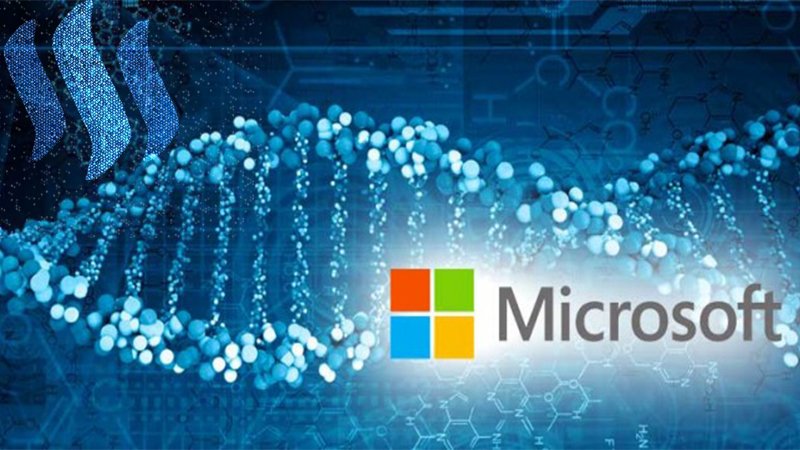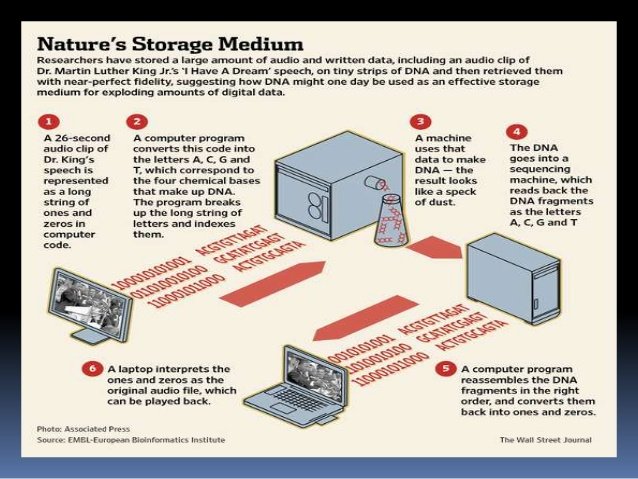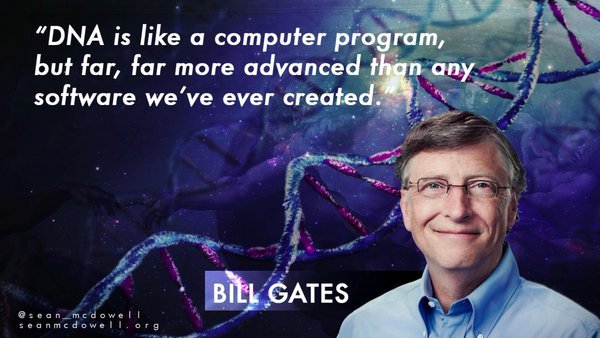
Imagine you could carry specific data everywhere - it would always be with you, it would be within you!
What sounds very much like a science fiction movie plot is actually real life:
Microsoft has announced that they are working on a technology to store data in your DNA.
Their goal is to have a storage system based on DNA working inside a data center until the end of this decade.
The aim is to have a “proto-commercial system in three years storing some amount of data on DNA in one of our data centers, for at least a boutique application" said Doug Carmean at Microsoft research.
After the proto-commercial in 3 years, a fully operational model should be completed within about 10 years from now - at least that's the goal.
Why would you want to save data from photos, videos or documents in the same molecules that our very core, our DNA is made of? Isn't that a bit crazy?!
The reason is that shrinking the size of computer memory has come close to its limit, but DNA could store very large amounts of data much more easily.
DNA can hold 1,000,000,000,000,000,000 (which is a quintillion) bytes of information in one cubic millimeter.
Imagine this: if every movie ever made would be formatted in DNA, the storage volume needed would be smaller than a sugar cube!
“DNA is the densest known storage medium in the universe, just based on the laws of physics. That is the reason why people are looking into this. And the problem we are solving is the exponential growth of stored information.”-Zhirnov, chief scientist of the Semiconductor Research Corporation

It has been done before - but only on a small scale.
In July 2016, Microsoft successfully 200 MB of megabytes in a DNA strand - including a music video.
The work was conducted by Karin Strauss of Microsoft Research and Luis Ceze from the University of Washington laboratory of computers.
How does it work?
This is the simplified explanation of the process:
First, the data needs to be converted from zeroes and ones to the molecules that DNA is made of - these are called ATCG molecules.
Then, the sequences are synthesized into actual DNA, and pooled with the other sequences that have been created.
To be able to access the files later, a "polymerase chain reaction" is being used to select the specific sequences you need.
Then, those sequences are being read, and the ATCG molecules are reverted into data.

Challenges
Challenge #1: Cost
The biggest challenge for this technology is that it's very expensive.
Specifically, the first step is the most expensive: actually converting the data into DNA (into ATCG molecules).
This is simply because the chemical process is very complex and costly.
For Microsoft's successful test run last year, they used 13,448,372 unique pieces of DNA. According to experts, buying this amount of DNA material on the open market would cost around $800,000.
Microsoft have already stated that the cost would have to fall by a factor of 10,000 to make it widely adoptable.
This might seem unlikely, but Microsoft also said that they believe this could happen in the future due to technological advancements.
“The main issue with DNA storage is the cost. So the main question is whether Microsoft solved this problem. (...) I did not see any progress towards this goal, but maybe they have something in their pipeline.”-Yaniv Erlich, Professor at Columbia University
Challenge #2: Speed
Another problem would be the speed with which the whole process is executed.
To be efficient and cost-effective, the whole process would ideally have to be automated.
The experiment in summer 2016 took several weeks to perform, so it's estimated that the transaction speed was only about 400 bytes per second - which is painfully slow.
Microsoft's goal would be to increase this speed to 100 megabytes per second.

So in conclusion, Microsoft is working on a first prototype model to be finished in 3 years, and a fully operational model to be finished in 10 years. But the obstacles that need to be overcome are still quite challenging, and a lot of technological advancements would have to be made to reach those goals.
What's your opinion about storing Data inside our DNA - amazing or creepy?
Images: 1, 2, 3, 4, Sources: 1, 2, 3, 4, 5, 6
- Instagram -

© Sirwinchester


